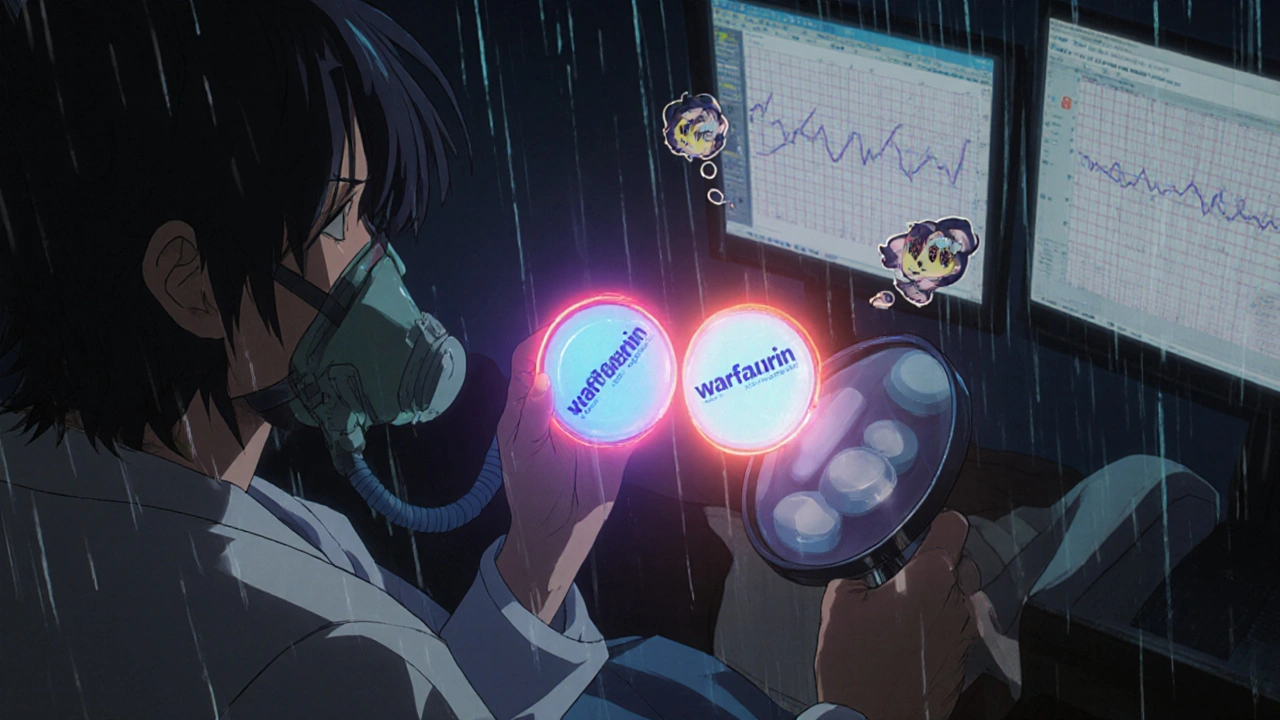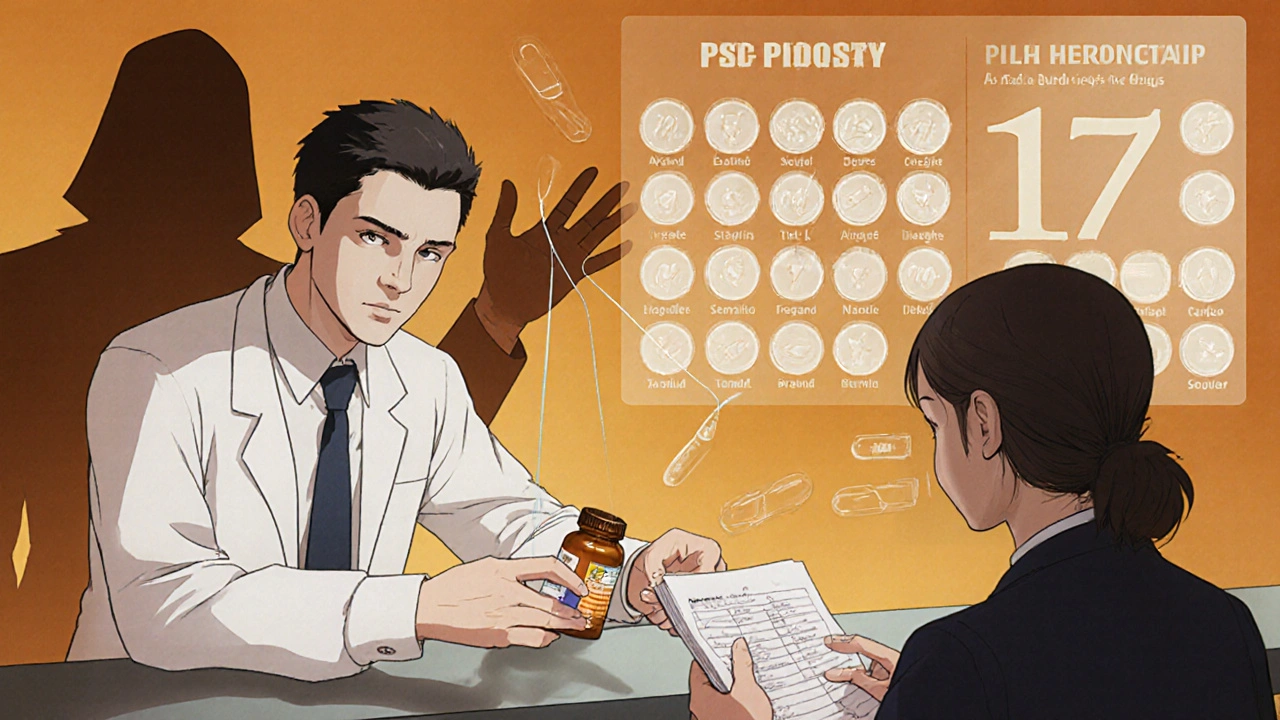Switching from a brand-name drug to a generic version sounds simple: same active ingredient, lower price, same result. But for some people, that switch isn’t harmless. It can trigger headaches, anxiety, seizures, or worse. If you’ve noticed a change in how you feel after your pharmacy gave you a different pill - even if it’s labeled the same - you’re not imagining it. And you’re not alone.
Why Switching Generics Can Cause Problems
Generic drugs are required by the FDA to have the same active ingredient as the brand-name version. That part is true. But what’s not always said is that generics can differ in their inactive ingredients - the fillers, dyes, coatings, and release mechanisms that hold the drug together and control how it enters your bloodstream. For most people, these differences don’t matter. For others, they can be the difference between feeling stable and feeling sick.The FDA allows generics to vary by up to 20% in how quickly and how much of the drug gets absorbed. That might sound tiny, but for drugs with a narrow therapeutic index - where the gap between an effective dose and a toxic one is razor-thin - even a 5% change can cause serious problems. Think of it like driving a car with a fuel gauge that’s off by a few gallons. You might make it to the next station… or stall on the highway.
Which Medications Are Most at Risk?
Not all generics are created equal. Some drug classes are far more sensitive to formulation changes than others. Here are the five categories where switching has the highest risk:- Antiepileptics - Switching generic versions of drugs like phenytoin or divalproex sodium has been linked to breakthrough seizures. A 2021 survey of neurologists found nearly 70% believed generic switches increased seizure risk in their patients.
- Thyroid medication - Levothyroxine has 12 different generic manufacturers in the U.S. Each uses a different formulation. Even small changes in absorption can throw thyroid levels off, causing fatigue, weight gain, or heart palpitations.
- Anticoagulants - Warfarin requires precise dosing. A 2019 study showed a 12.3% higher chance of hospitalization within 30 days after switching between generic versions.
- Immunosuppressants - Drugs like tacrolimus are critical after organ transplants. A slight drop in blood levels can trigger organ rejection. Studies show switching increases rejection risk.
- Psychiatric medications - Extended-release ADHD drugs like Adderall XR have different bead-release systems across manufacturers. Patients report sudden return of symptoms, increased anxiety, or insomnia within hours of switching.
Real Stories, Real Consequences
Online forums are full of posts from people who swear their lives changed after a generic switch. On Reddit’s r/ADHD community, one user wrote: “I was stable for three years on my brand-name Adderall. The pharmacy switched me to a generic. Within 24 hours, I couldn’t focus, my heart raced, and I couldn’t sleep. I thought I was losing my mind.”Another patient, taking generic warfarin, ended up in the ER after a minor cut wouldn’t stop bleeding. Her INR level - a measure of blood clotting - had jumped dangerously high after switching manufacturers. Her doctor had no idea the pharmacy had changed her pill.
A 2023 hospital study of 1,437 patients found that 20% of those who were switched between generics accidentally took two versions of the same drug - because they didn’t recognize the new pill. One case led to serotonin syndrome, a life-threatening reaction.

Why This Keeps Happening
You might wonder: why are pharmacies allowed to switch you without telling you? The answer lies in how drug pricing works. Pharmacy benefit managers (PBMs) - companies like CVS Caremark and OptumRx - negotiate rebates with generic manufacturers. The company that pays the biggest rebate gets the contract. That means your pill can change every few weeks, based on who offers the most money, not who makes the most stable product.According to Senate investigations, PBMs change preferred generic manufacturers an average of 4.7 times per year per drug. That’s not a mistake. It’s business. And it’s happening to about 187 million Americans with prescription coverage.
What You Can Do to Protect Yourself
You don’t have to accept random pill changes. Here’s how to take control:- Ask for the manufacturer name - When you pick up your prescription, ask: “What company made this?” Write it down. If your pill looks different next time, ask why.
- Request “Dispense As Written” (DAW-1) - Tell your doctor you want to stay on the same generic version. They can write “DAW-1” on your prescription, which legally prevents substitution.
- Keep a medication log - Note the pill’s color, shape, imprint, and manufacturer every time you refill. If you feel different, you’ll have proof.
- Watch for changes in the first 72 hours - Side effects from switching often show up fast. If you get new headaches, mood swings, dizziness, or trouble sleeping, don’t wait. Call your doctor.
- Ask about your drug class - If you’re on a high-risk medication (like those listed above), ask your pharmacist or doctor: “Is this a narrow therapeutic index drug?” If yes, switching needs extra care.

What Doctors and Pharmacies Should Be Doing
Many providers still assume generics are interchangeable. But experts are pushing for change. The American Society of Health-System Pharmacists now recommends against automatic substitution for 17 specific drugs, including tacrolimus, bupropion XL, and phenytoin.Some hospitals have started “medication fingerprinting” - keeping patients on the same manufacturer for high-risk drugs. One system cut switching-related problems by over 50%.
Pharmacists can often help. If your pharmacy runs out of your usual generic, ask if they can order the same brand. Many will, especially if you explain you’ve had issues before.
The Bigger Picture
Generic drugs saved the U.S. healthcare system $370 billion in 2022. That’s huge. But the cost of switching - hospital visits, lost workdays, worsening conditions - is estimated at $2.1 billion a year. That’s not just money. It’s people.The FDA says generics are safe for the general population. But “general population” doesn’t include you. If you’re one of the people who reacts to formulation changes, your experience matters more than statistics. Your body isn’t an average. It’s yours.
As of 2024, the FDA is testing new ways to evaluate complex generics - especially extended-release and injectable drugs. But until then, you’re the best advocate for your own health. Don’t let a change in pill color be the reason you feel worse.
Can switching to a generic drug make my condition worse?
Yes, for certain medications - especially those with a narrow therapeutic index like antiepileptics, thyroid drugs, warfarin, and some psychiatric meds. Even small changes in how the drug is absorbed can lead to loss of control over your condition, new side effects, or even hospitalization.
Why do generic pills look different every time I refill?
Pharmacies switch between different generic manufacturers based on which one offers the highest rebate to your pharmacy benefit manager (PBM). There’s no requirement to notify you, so your pill’s color, shape, or imprint may change monthly - even if the name on the label is the same.
How do I know if my medication has a narrow therapeutic index?
Ask your doctor or pharmacist. Common examples include levothyroxine, warfarin, tacrolimus, phenytoin, and extended-release ADHD medications. If your drug requires regular blood tests to monitor levels (like INR for warfarin or TSH for thyroid meds), it’s likely a narrow therapeutic index drug.
Can I ask my doctor to prescribe only one generic manufacturer?
Yes. Your doctor can write “Dispense As Written” (DAW-1) on your prescription, which legally prevents the pharmacy from switching manufacturers without your consent. Some doctors may need to be reminded - but it’s your right to request it.
What should I do if I feel worse after switching to a generic?
Don’t ignore it. Contact your doctor immediately. Note the date of the switch, the new pill’s appearance, and your symptoms. If you’re on a high-risk medication, your doctor may need to check blood levels or switch you back. Keep a log - it helps prove the connection.
Are brand-name drugs better than generics?
For most people, no. Generics are just as safe and effective. But for a small group - especially those on narrow therapeutic index drugs - the consistency of one manufacturer matters. If you’ve had a bad reaction to a switch, staying on the same version - even if it’s generic - may be the best choice.
Is there a list of drugs where switching is risky?
Yes. The American Society of Health-System Pharmacists published a list in January 2024 of 17 drugs where automatic substitution is discouraged. These include tacrolimus, bupropion XL, phenytoin, levothyroxine, and several extended-release ADHD and seizure medications. Ask your pharmacist for this list if you’re unsure.
Next Steps: What to Do Today
If you’re taking a generic medication, especially for epilepsy, thyroid, heart, or mental health:- Check your last two refills. Are the pills the same color, shape, and imprint?
- If not, call your pharmacy and ask which manufacturer made each one.
- Write down the manufacturer name and keep it with your medication list.
- Ask your doctor if your drug has a narrow therapeutic index.
- If you’ve felt worse since switching, schedule a check-up - don’t wait.
Your health isn’t a cost-saving metric. It’s personal. And you have the right to know what’s in your pill - and why it might be changing.

